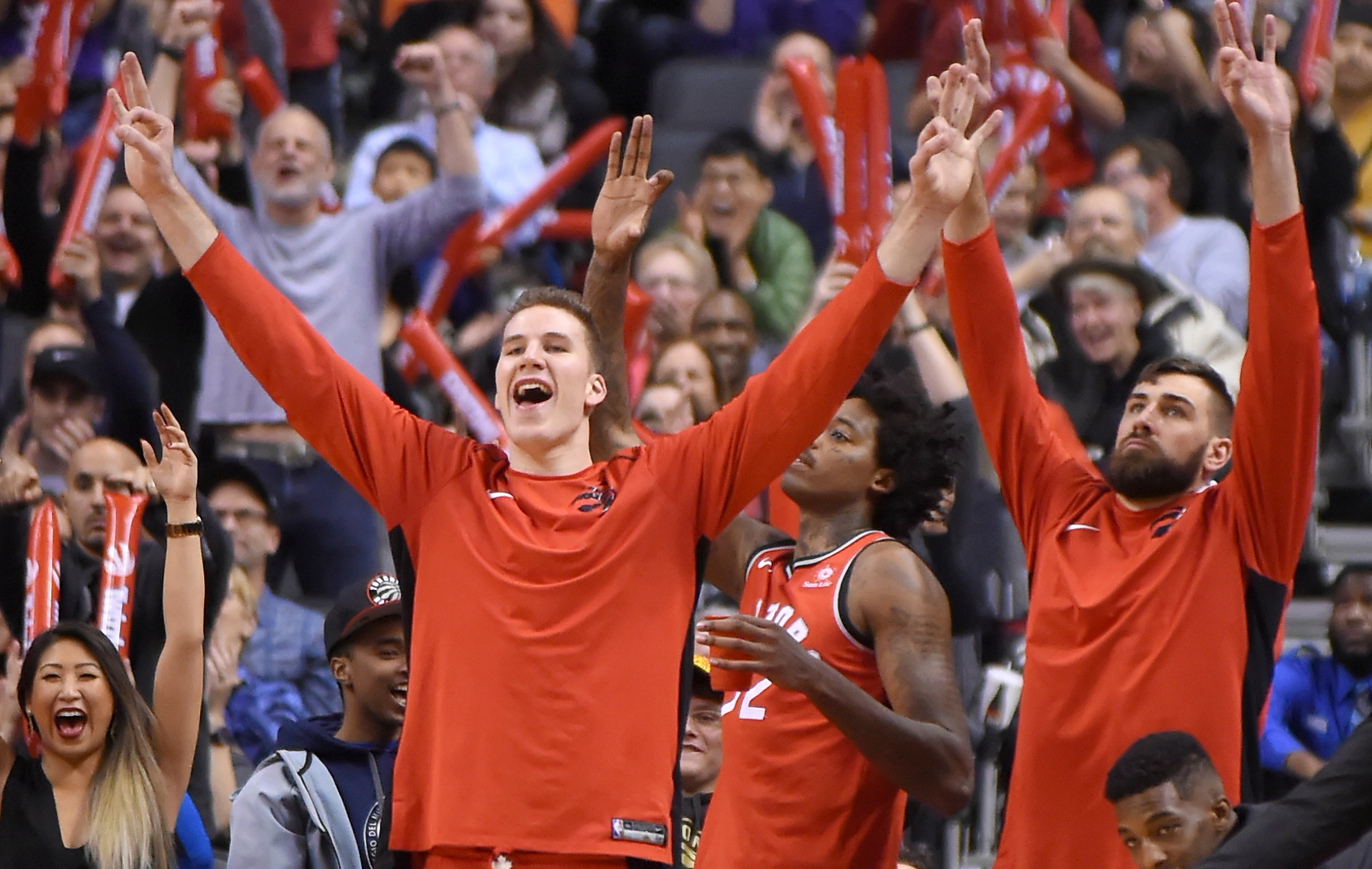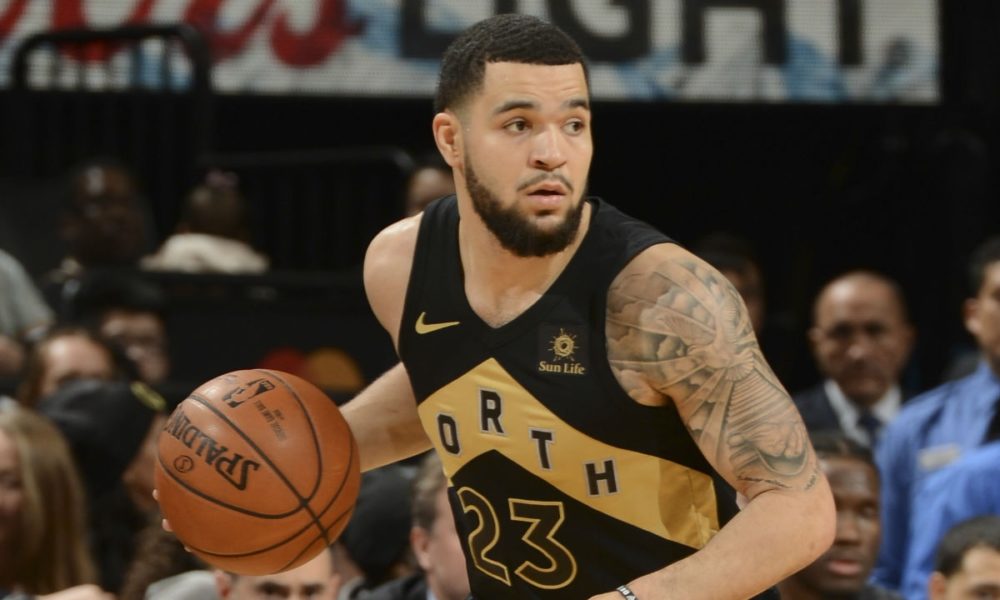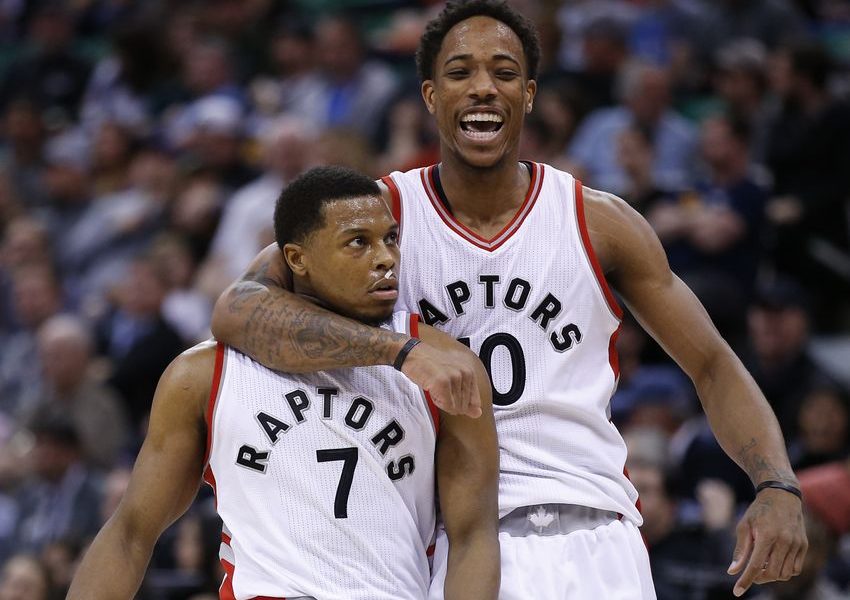It’s a small-ball league in the NBA this year, as you’ll frequently be reminded when you watch games. Plenty of contenders have found success going to smaller lineups, using versatile forwards to make up for a lack of traditional size and create mismatches all over the floor to dominate their opponents. Golden State does it with their traditional death lineup, Milwaukee has ways to do it with Giannis’ positional versatility, and Cleveland does it with Kevin Love at center and LeBron James beside him as the power forward.
That last example should be familiar to most Raptors fans at this point, because it has come up ever since the game between the two teams on March 21st. That particular look caused a lot of problems for the Raptors, and helped the Cavaliers secure the victory. This has led to a lot of talk of how the Raptors can match up small to hold their own against that particular Cleveland group in a playoff series, and which small lineup is best fit for those minutes.
If we’re being perfectly honest about it though, the answer to those questions is that the Raptors can’t match up small to a Kevin Love at center lineup with LeBron for the Cavaliers, and there’s nothing wrong with that, very few teams can. Toronto simply doesn’t have the small ball players to match up, and should instead focus on what they do have, which is size. In this era of small-ball, the power of being bigger than your opponent is often lost, because few teams have the ability to truly abuse that advantage. The Raptors really do have top-end talent at center this year, and that’s something that no one in the Eastern Conference has the ability to truly stop. Jonas Valanciunas has been scoring at will against nearly anyone in the league this year when the Raptors go to him, and has extended himself out to the three-point line. Jakob Poeltl has shown the ability to be an elite rim protector while also being a mobile big man who has the lateral quickness to stay with guys on switches, and maintains offensive value through great pick and roll reads and having good hands in the paint, converting on the passes thrown his way, passing out for some nice assists, and getting his hands on a lot of offensive rebounds. For most of the year, Lucas Nogueira has been the forgotten man in that rotation, left to getting his minutes in garbage time and when the other two struggled with foul trouble, but he’s also shown improvements this year, and with his size, athleticism, and also having three-point range, he definitely has the ability to be a rotation player.
Realistically, against those Love at center lineups, you need to have one of three guys playing the four for the Raptors. It has to be either Serge Ibaka, Pascal Siakam, or OG Anunoby, and the center is going to be spending a large portion of their minutes trying to protect against Kevin Love getting open looks from three-point range. The natural response then has been to go to the Ibaka-Siakam front court, which gives you a help defender who can protect the rim in Ibaka, and Siakam as the one who gets the unenviable LeBron assignment. You maintain a somewhat reasonable approach to defending that Cleveland front court while also gaining the advantage of Ibaka’s shooting to space the floor on offense and try to keep up with the buckets the Cavaliers do get.
I’d like to, however, suggest an alternative to this look, in going with Jakob Poeltl instead of Ibaka. Poeltl is a longer, quicker defender at this point, and his rim protection numbers are better than Ibaka’s this year as well. The defensive advantages are clear, and given that Cleveland likely won’t be running that group as a starting lineup, you don’t compromise Ibaka’s minutes with the Raptors starters, which have been good, and risk him wearing down over the course of the series. The real question comes at the offensive end, because good, playoff small-ball offenses are simply too potent to completely stop, and you still have to maintain your own offensive pace to keep up. Jak clearly doesn’t provide the outside shooting of Ibaka, but what he does bring is his screen and roll game, which is an area where Ibaka doesn’t provide the same benefits. Poeltl has to be accounted for by a defense both in terms of his ability to set solid screens for the Raptors ball handlers, as well as his ability to either find his own shot on the roll if given space, or pass out if it isn’t there, where he’s shown great passing vision. As well, Poeltl and Siakam have established throughout the season their chemistry at that end of the floor, finding each other frequently, even in traffic, to create easy baskets.
There is, however, a solid chance that even that isn’t enough against Cleveland to win those minutes consistently, and the best the Raptors are able to do being to slowly bleed during those stretches, requiring them to make up the difference in other parts of the game. The starters have performed admirably, even against the best teams, and should be able to hold their own, and the bench lineups have been good, and should maintain use in the playoffs. As well, there will likely be more minutes for both Lowry lineups with four bench players as well as DeRozan lineups with bench players, and those groups have both shown positive signs in small samples this year, and were good in larger minutes in years past.
The Raptors do need to find ways to create advantages and mismatches of their own in the playoffs though, and as mentioned above, the center position is somewhere they can frequently find options to do so. Not only must they keep Jonas Valanciunas on the court and involved, and should probably see his minutes increase as the playoffs progress, but also they need to find opportunities to abuse Poeltl’s ability to affect plays on the offensive boards, and to take advantage of those players ability to screen. One unlikely option to open up both of those players games, as well as potentially find places for Bebe to get on the floor, that might be worth considering when they can find matchups where they can use it, is to go even bigger and use one of the team’s centers as a power forward.
This was something the Raptors did last season due to injuries and depth concerns, and had success with in all three variations with these three players. All three centers have improved as well, with Jonas’ outside shooting, Jak’s increased comfort and defensive presence, and Bebe has also, when able to find minutes, shown signs that his defense has improved to go with his versatile offensive game.
The least used of the three pairings a season ago was Valanciunas and Poeltl together, and it made sense at the time that it saw limited use, registering just 26 minutes, with a +6.7 net rating in them. This season, with Poeltl’s improved defensive confidence and Jonas’ ability to provide some spacing offensively from outside, it feels like a more natural fit. While Jonas can play the role of the ‘four’ on offense, both players are talented in the pick and roll, and both guys also are effective on the offensive boards and able to put pressure on a defense there. At the defensive end, Poeltl’s mobility should allow him to guard forwards while also providing help defense, allowing Valanciunas to stay at home guarding centers where he’s most comfortable, and Jonas’ dominance on the defensive boards would make up for one of the areas where Jak has at times struggled.
Poeltl and Nogueira together was the least effective of the three groups last year, with just a +1.5 net rating in their 75 minutes, and is the pairing that seems to project as the least reliable. Both players are at their best as help defenders and rim protectors defensively, and neither is the type that you want banging with bigger bodies. Still, Bebe can space the floor on offense, allowing Jak room to work as the screener and roll into the paint, which leaves it as a viable option, although probably less so than the other pairings.
Lastly comes the grouping of Bebe and Jonas, which posted a fantastic +10.8 net rating in 171 minutes a year ago, including starting together on multiple occasions. With both players able to shoot from long range and Bebe being allowed to be the mobile help defender that his athleticism is suited to, this feels like a natural fit, and looked the part last season.
Now, with Serge Ibaka as the starting power forward, and Pascal Siakam’s emergence as a force to be reckoned with, it seems unlikely that any of these pairings sees time in the near future, and understandably so. The goal in bringing this up isn’t to say that either of those players should be replaced, either. In the playoffs though, when you’re as deep as this Raptors roster but lacking the top end superstar talent of other contenders, you have to sometimes be willing to take risks in order to create advantages that aren’t readily presented when you do have a generational superstar like a LeBron, Steph Curry or James Harden, because the team that wins a playoff series is often the team that best creates and attacks mismatches. That being the case, and with the Raptors goal being a long playoff run, it’s always best to keep your options open and be mindful of all of the weapons in your arsenal, and going big to take advantage of a defense is an option that thus far they haven’t looked at this year.
Even if the Raptors don’t go bigger to create mismatches of their own, it’s worth remembering that the center position is one of strength, and that attempting to force smaller teams to try to match up with the Raptors size might be better than letting the opponent dictate terms and surrendering that advantage, because the team with the best ability to generate advantages is often the one that wins a playoff series.



